Ubiquiti Networks 12-Port EdgeRouter 12 Advanced Network Router
$179.99
In stock
Description
Connect computers, servers, and other devices to your network with the 12-Port EdgeRouter 12 Advanced Network Router from Ubiquiti. Capable of a Layer 3 forwarding rate up to 3.4 million pps and a line rate up to 6.8 Gb/s, the rack-mountable EdgeRouter 12 comes equipped with 10 Gigabit Ethernet ports, two SFP ports, and an RJ45 serial management port. The switch also has a PoE input port and a PoE passthrough port.
Powered by a quad-core 1 GHz MIPS64 CPU and 1 GB of DDR3 RAM, the fanless switch can be managed and configured via an integrated command-line interface or with the Ubiquity Network Management System software app.
Additional information
| Weight | 2.4 lbs |
|---|---|
| Dimensions | 15 × 7 × 2.38 in |
| Ports | 1 x Ethernet RJ45 (Console)<br />1 x 10/100/1000 Mb/s Gigabit Ethernet RJ45 (Pass-Through) PoE<br />9 x 10/100/1000 Mb/s Gigabit Ethernet RJ45<br />2 x 10/100/1000 Mb/s Gigabit SFP (Pass-Through) PoE<br />1 x 5 Gb/s SFP |
| DC Input Power | VDC at 1 A |
| Material of Construction | Metal |
| Cooling System | Passive |
| Certifications | CE, FCC, IC, as per Manufacturer |
| Operating Humidity | 10 to 90% |
| Operating Temperature | 14 to 122°F / -10 to 50°C |
| Power Supply Type | External |
| PoE Port Power | 24 V at 0.83 A (20 W) |
| AC Input Power | 110 to 240 VAC, 50 / 60 Hz |
| Power Draw | 200.00 W |
| Layer Services Supported | Layer 2 Support, Layer 3 Support |
| Memory | 1 GB DDR3 |
| Processor | 1 GHz Quad-Core |
| Flash Memory | 4 GB |
| Packet Buffer | 1514 B |
| Forwarding Rate | 68, 000 Mpps |
| Supported IEEE Standards | 802.1q, 802.3ad |
| Queuing | Deficit Weighted Round Robin (DWRR) |
| Supported Protocols | IPv4<br>IPv6 |
| Indicator Lights | Link/Activity, Link/Activity/Speed, PoE |
Reviews (7)
7 reviews for Ubiquiti Networks 12-Port EdgeRouter 12 Advanced Network Router
Only logged in customers who have purchased this product may leave a review.
Related products
Wired Networking
Wired Networking
Wired Networking
Wired Networking
Wired Networking

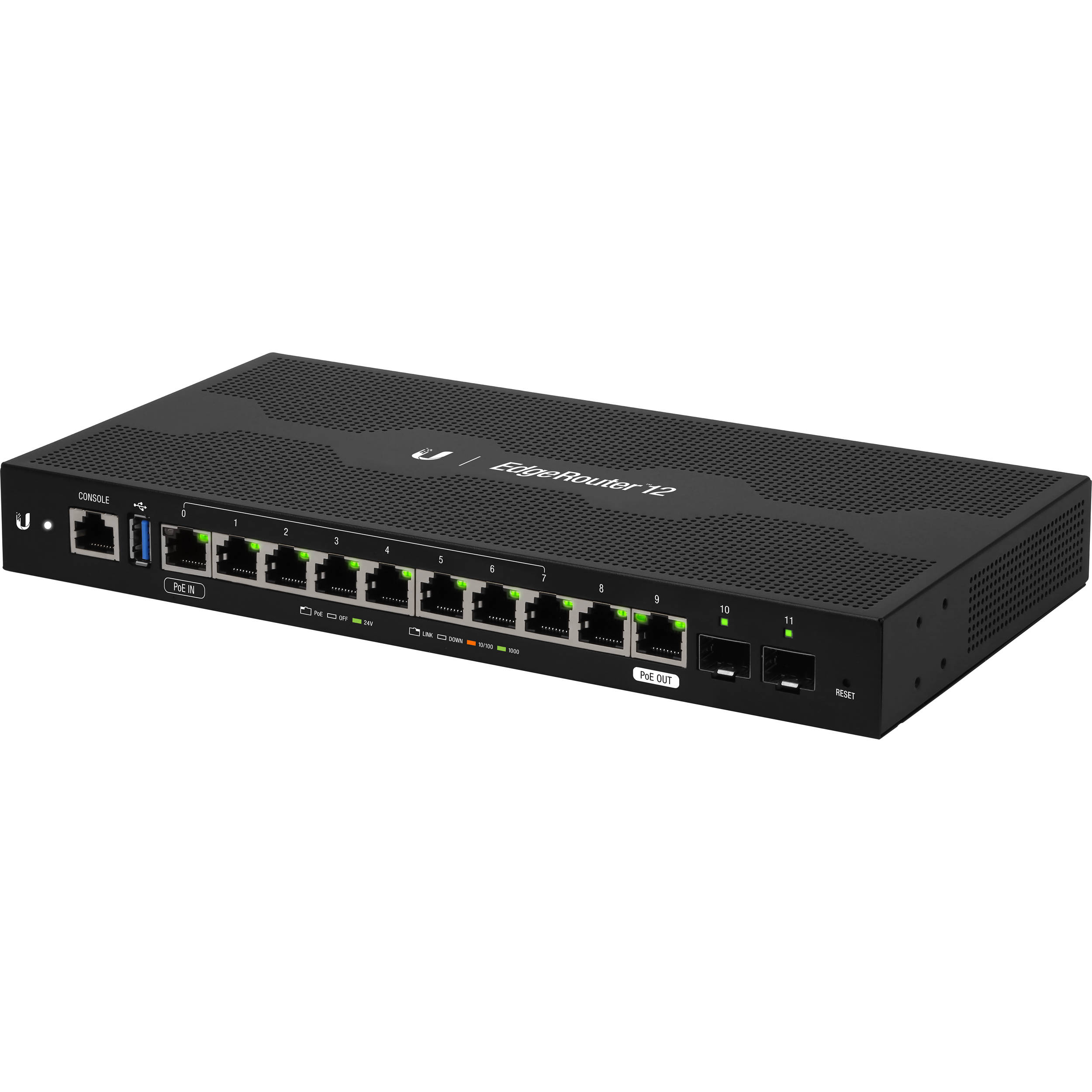
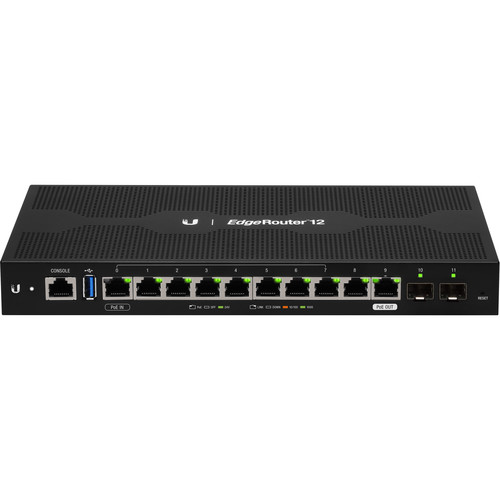
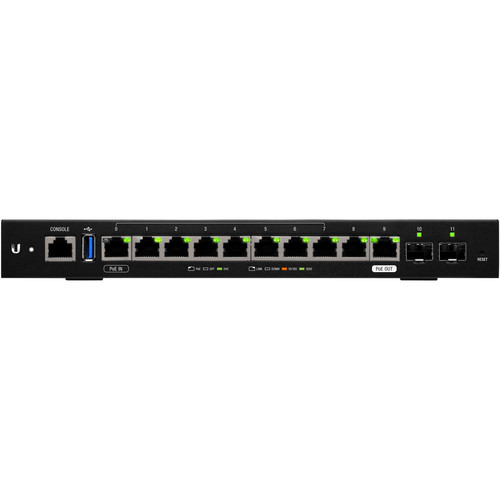
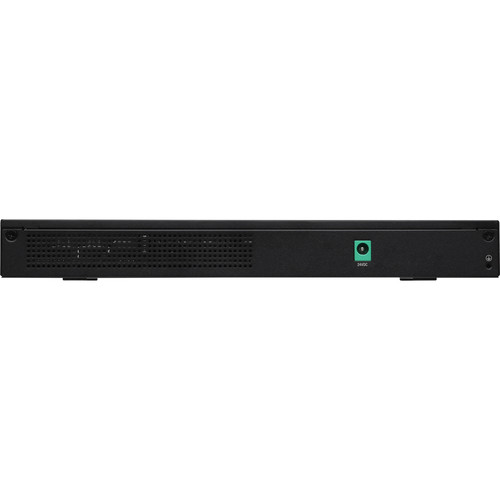
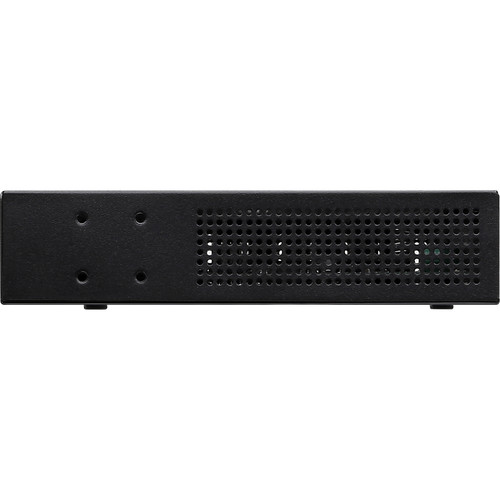
Alyce Rath (verified owner) –
I got this to make the most out of our slower internet (100down and 10 up) and I am not disappointed. Went from an ASUS AC-68U to this and after enabling Smart Queue we can watch Netflix, download a game off Steam (without manually needing to slow the download speed) and have two people play at the same time without much ping increase. Basic setup wizard makes it headache free. I am not using UNMS at the moment so no idea how well it runs but the UI is intermediate but not overly complicated.
Cora Gorczany (verified owner) –
While I been using different versions of these for the last 5 yrs, this new one seems better. Like it a lot.
Jo Blanda (verified owner) –
This Edge router is fast and easy to deploy.
Eleonore Stracke (verified owner) –
Fear not the dev-ops learning curve that comes with architecting an advanced home network, it’s all worth it when you see a +1,000 Mbps speedtest =]
Madison Lemke (verified owner) –
Best giga router. Works well in many different situations. Easily updatable and solid performance.
Cayla Farrell (verified owner) –
I bought this for home use. I suppose I would be a router enthusiast but for the performance and features I wanted, this was the best price I found. I was able to set up a 802.3ad bond to my cable modem and enable Ipv6 prefix delegation without any issues. This is not a good router choice if you’re a networking novice. If you can make a router yourself with iptables and dnsmasq, you will have no issue using this. Be aware of the internal port configuration and the bandwidth limitations that brings. Depending on your needs, like mine, this might not matter beyond what ports you pick. The last 4 ports are directly connected to the router IC but the previous 8 go through a switch fabric before connecting to the router IC. The support forums are quite helpful. My only real annoyance so far is its CLI is somewhat limited in configuring more advanced firewall/iptables rules.
Uriel Zboncak (verified owner) –
Short version: It’s well built, powerful, and can maintain gigabit download speeds across the network. Out of the box wizard offers easy setup, traffic analysis with hardware offload does not impact bandwidth speeds, and the CLI offers infinite configuration options. After a recent gigabit fiber upgrade, my rather long in the tooth mini PC running pfSense couldn’t utilize the full bandwidth across it’s internal to external ethernet bus. This may be a little overkill for a home network, but I wanted to be able to utilize the switch ports without degrading overall performance. Had some initial issues with interface configuration, the wizard created default subnets that were not what I wanted. This lead to some issues with ARP resolution after changing them. A reboot resolved that. The web UI is pretty slick, it’s a major upgrade from both pfSense and residential consumer level products. The power is in the CLI configuration, and there is a learning curve for anyone coming from a consumer level product. I was network specialist 20 years ago, and had a lot of experience with Cisco routers, so some of it was familiar. There are still issues I have yet to resolve, for instance mDNS resolution of the router’s name without re-broadcasting mDNS over my WAN interface. The built-in traffic analysis is handy, and with the hardware-offload does not impact bandwith across the switch or routed subnets. 100% recommend this router.